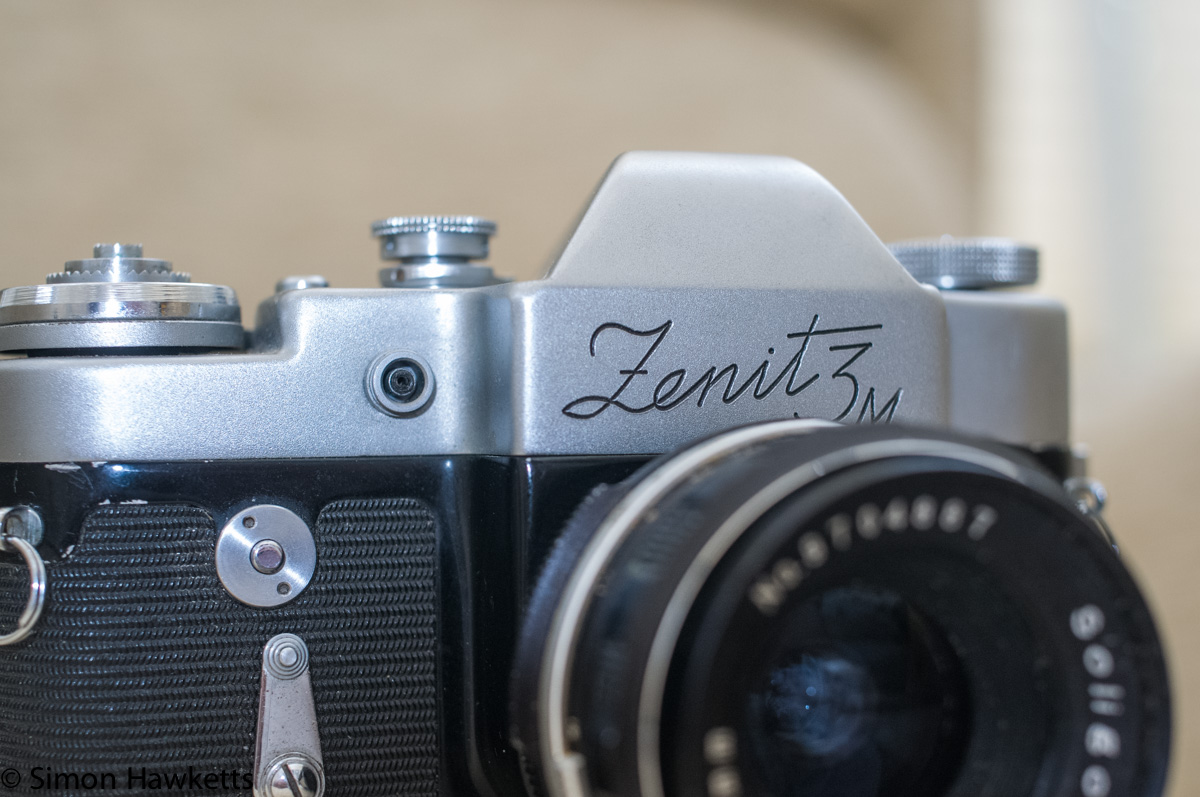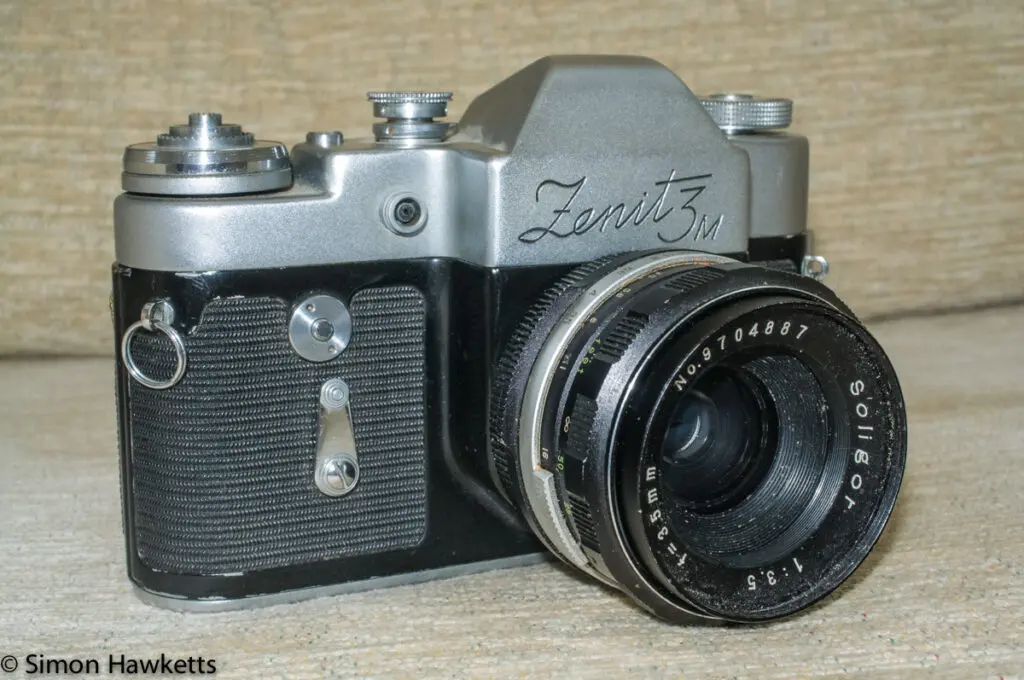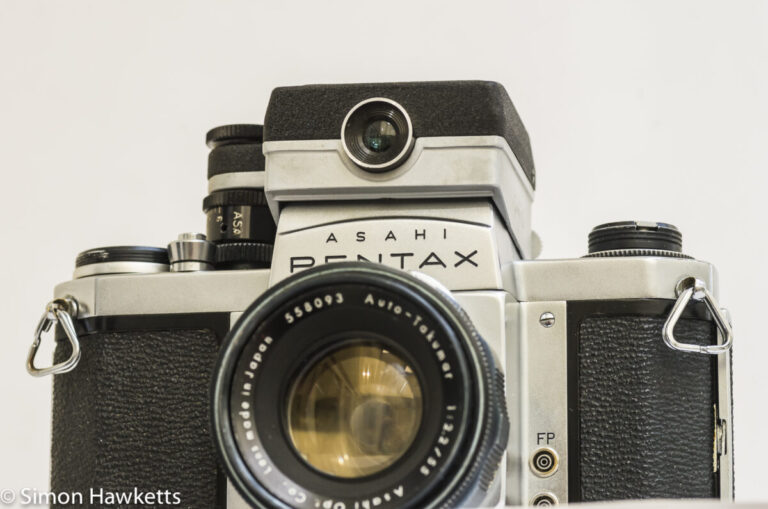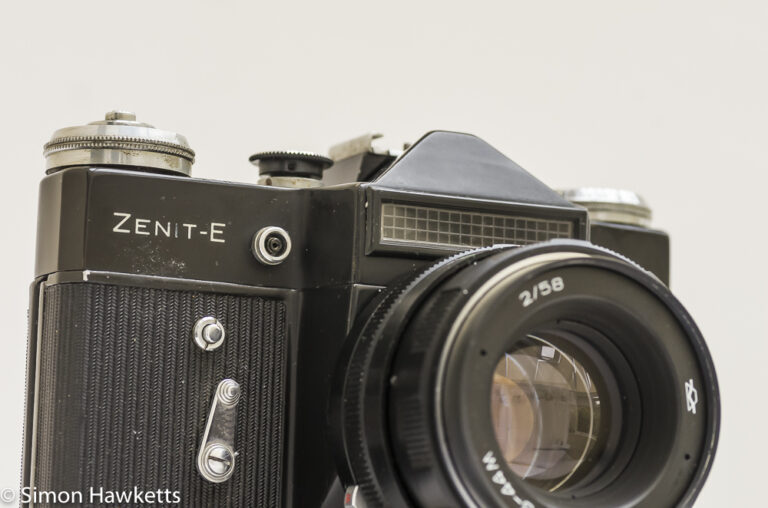A Classic & Fun camera, the Zenit 3M 35 mm SLR
The subject of this post is a classic 35 mm SLR vintage camera which was probably the first ‘proper’ camera many photographers over the age of 60 owned, the Zenit 3M. It was one of the early cameras in a range of Russian cameras from the Zenit stable that led to models like the Zenit B and the later Zenit E which sported a built-in light meter.
Production of the Zenit 3M began in 1962 and continued right up to 1970, by which time it must have been competing with some quite sophisticated cameras.
My Zenit 3M vintage camera
I purchased my copy of the Zenit 3M from a ‘buy it now’ sale on eBay as an impulse buy because it looked quite cheap at £18. For this price I got the camera, a rather tatty ever ready case and a Soligor 35 mm f/3.5 prime lens.
When the unit turned up a few days after buying it, I extracted it from a surprisingly well packaged parcel to find a very clean camera which looks quite complete. Considering its age, there are very few marks on the metal top cover, and the body material and paintwork is similarly well-preserved.
Mechanically, there is one issue which is that the second curtain is a bit lazy when the camera is on the slowest shutter speed of 1/30 sec. When set to this speed or bulb, the second curtain takes about 1/2 sec to actually close. I would guess that this is almost certainly down to grease and dirt in the mechanism and could probably be fixed quite easily.
Pictures of the Zenit 3M camera
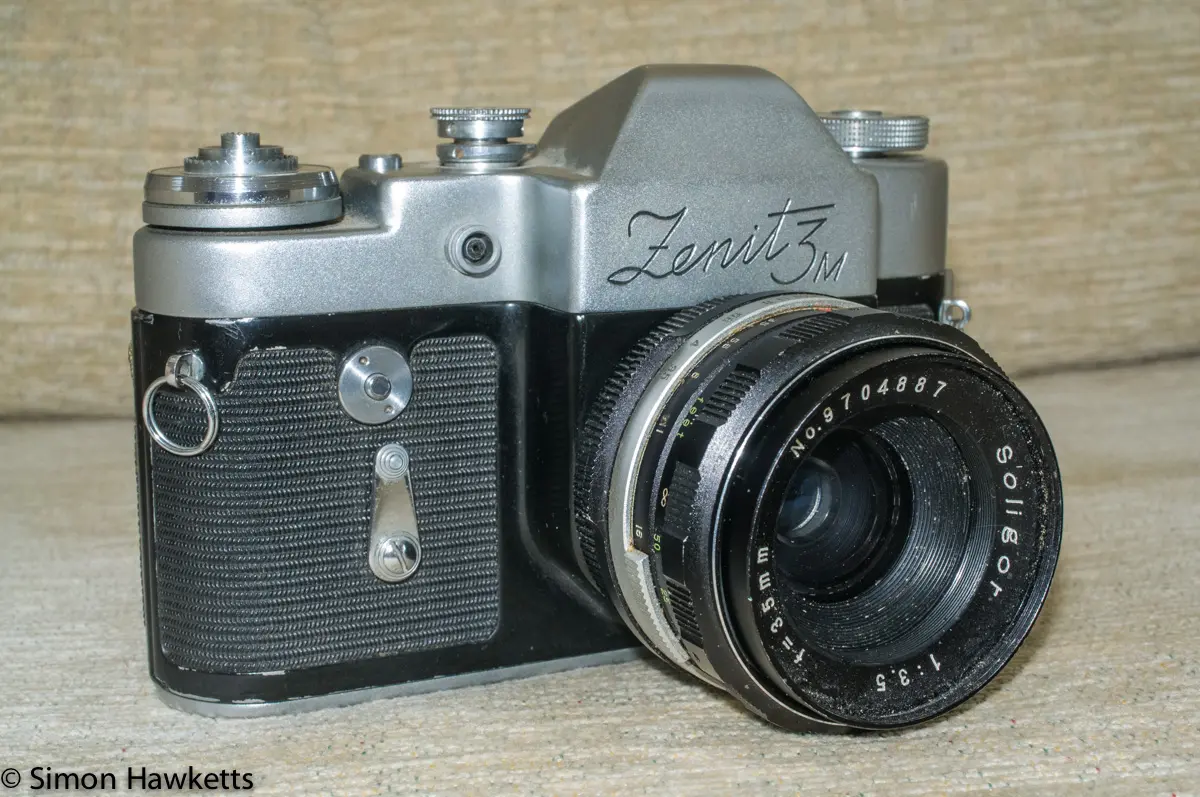

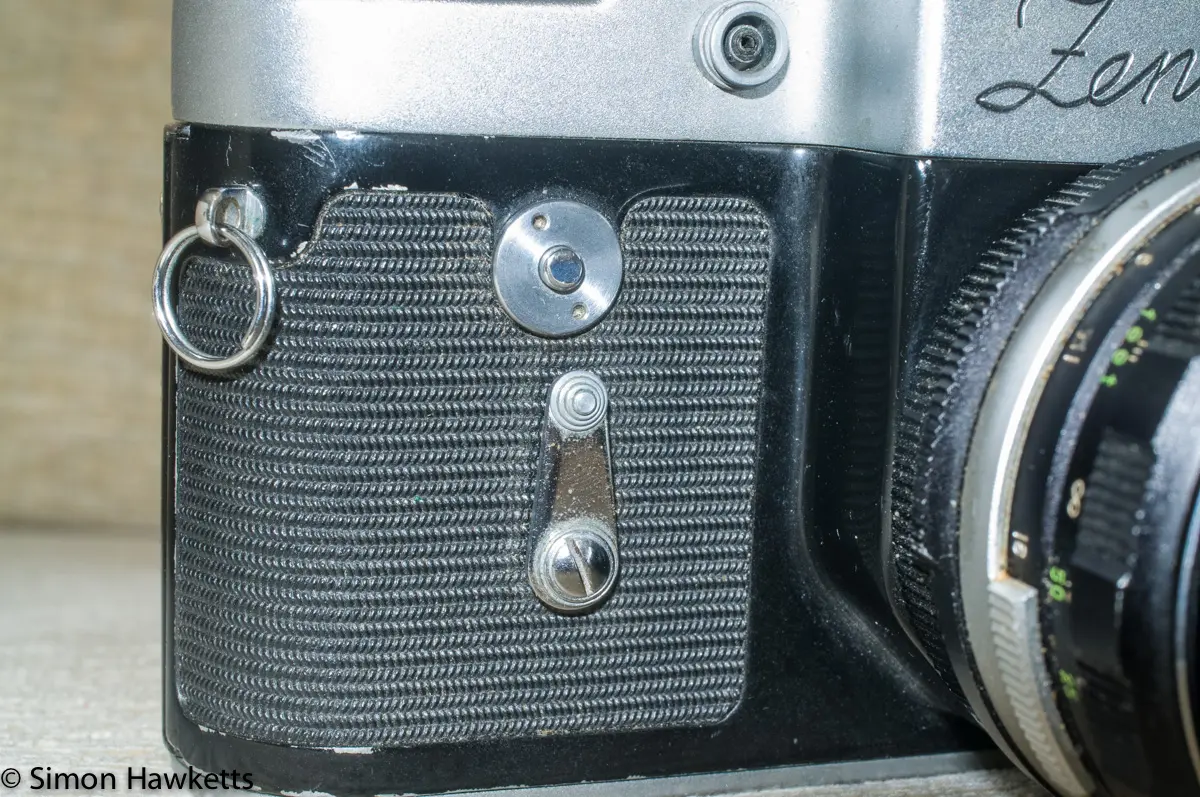
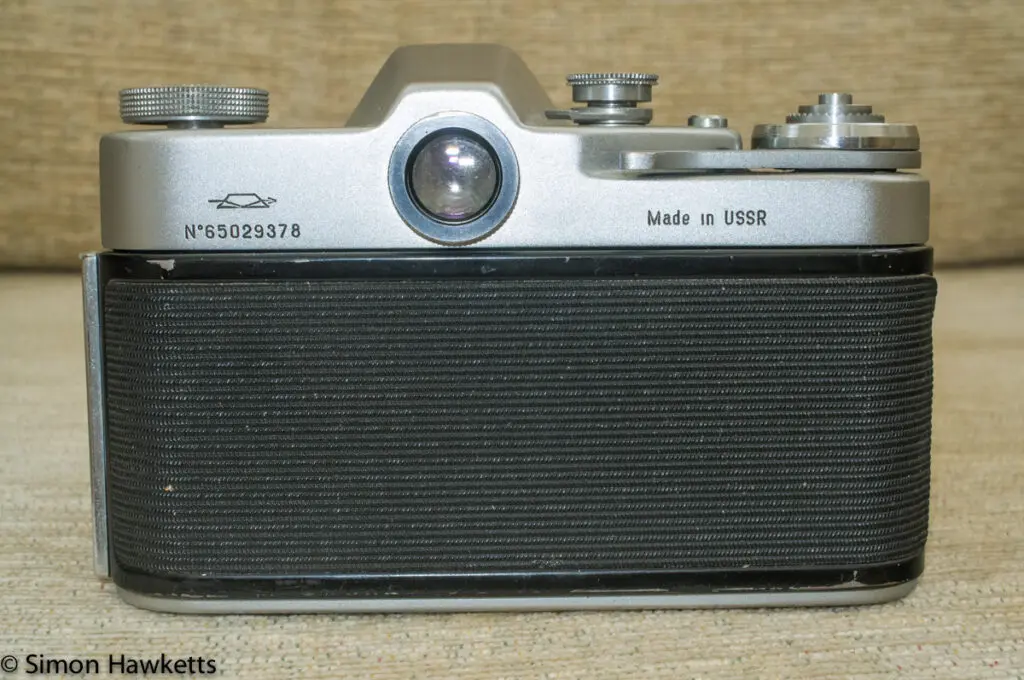
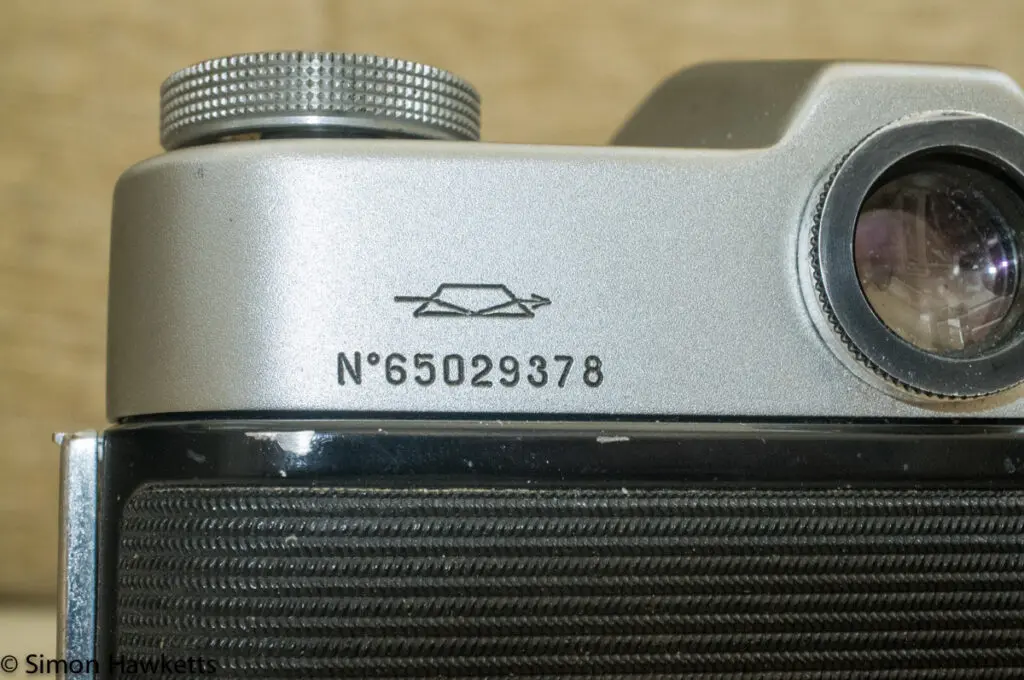
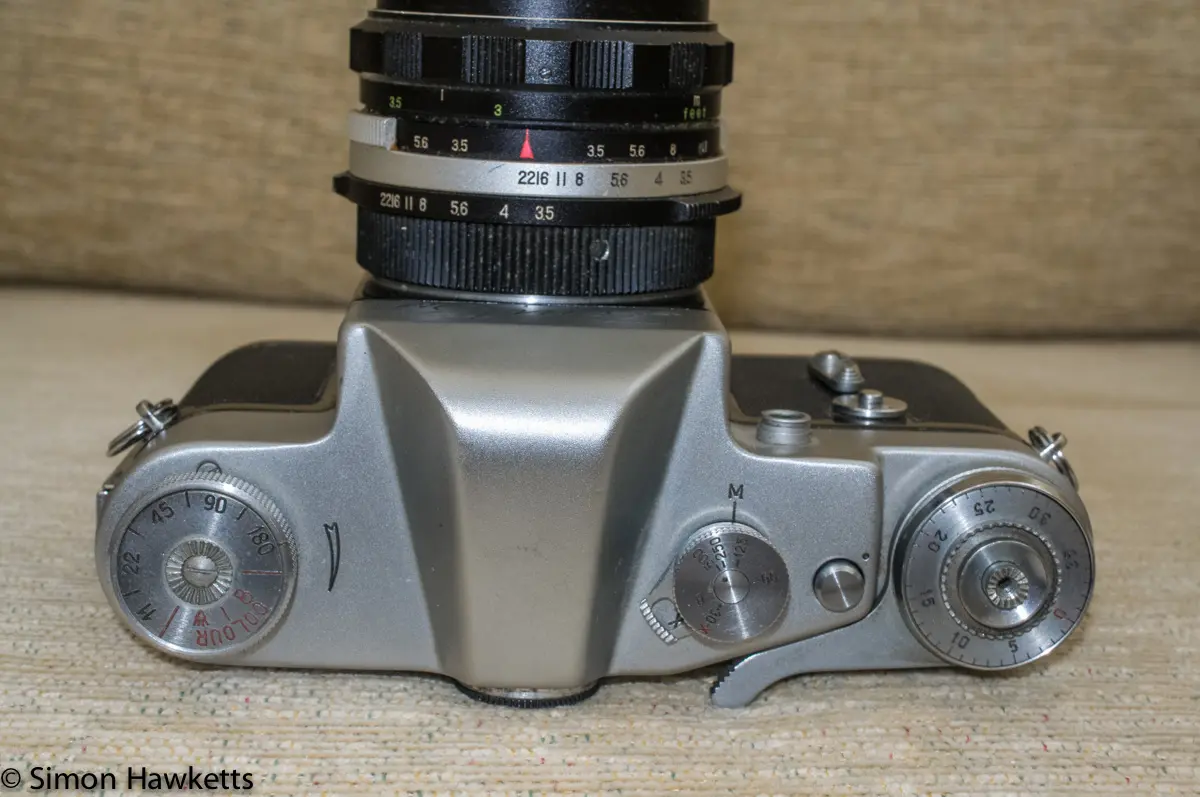
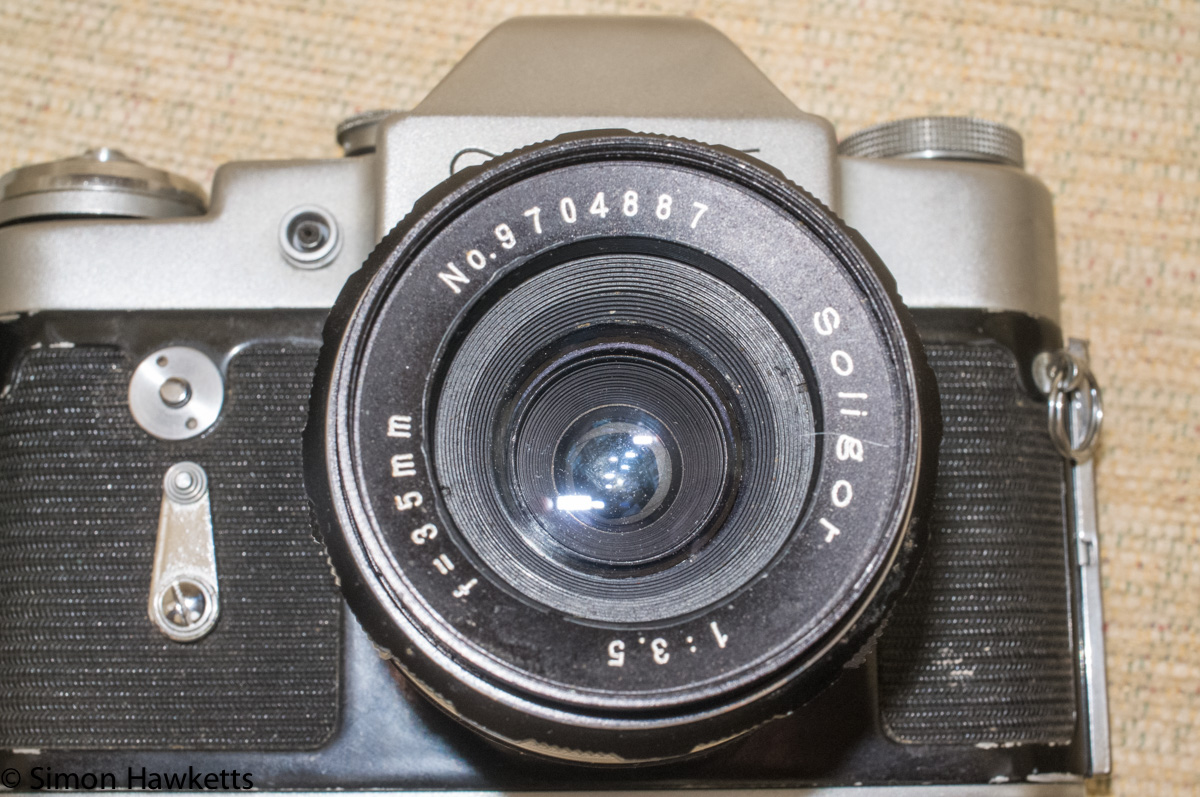
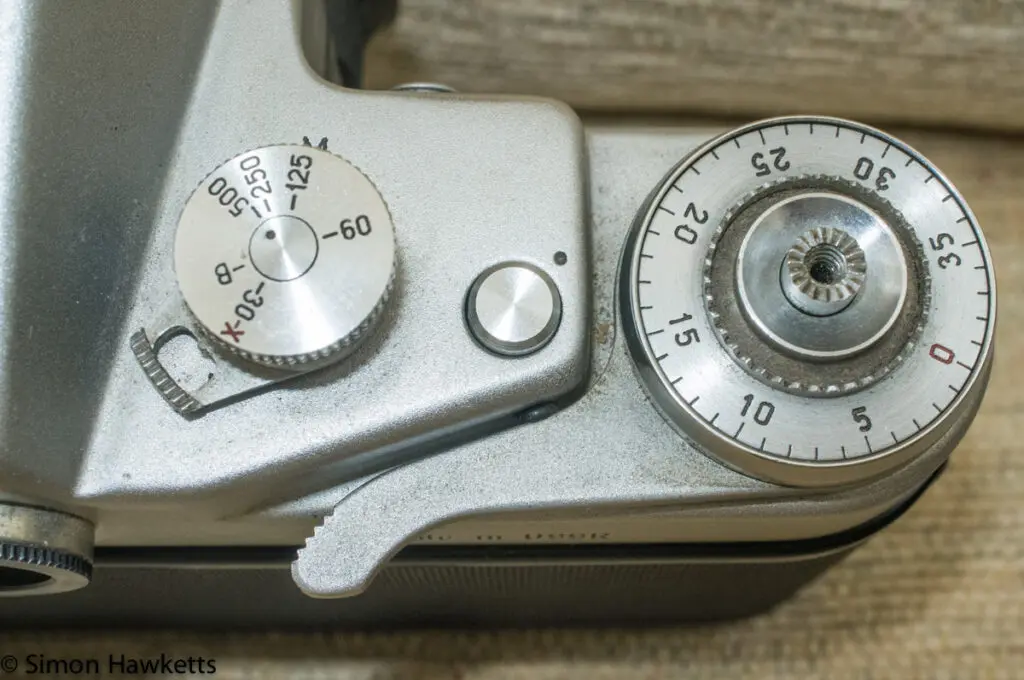
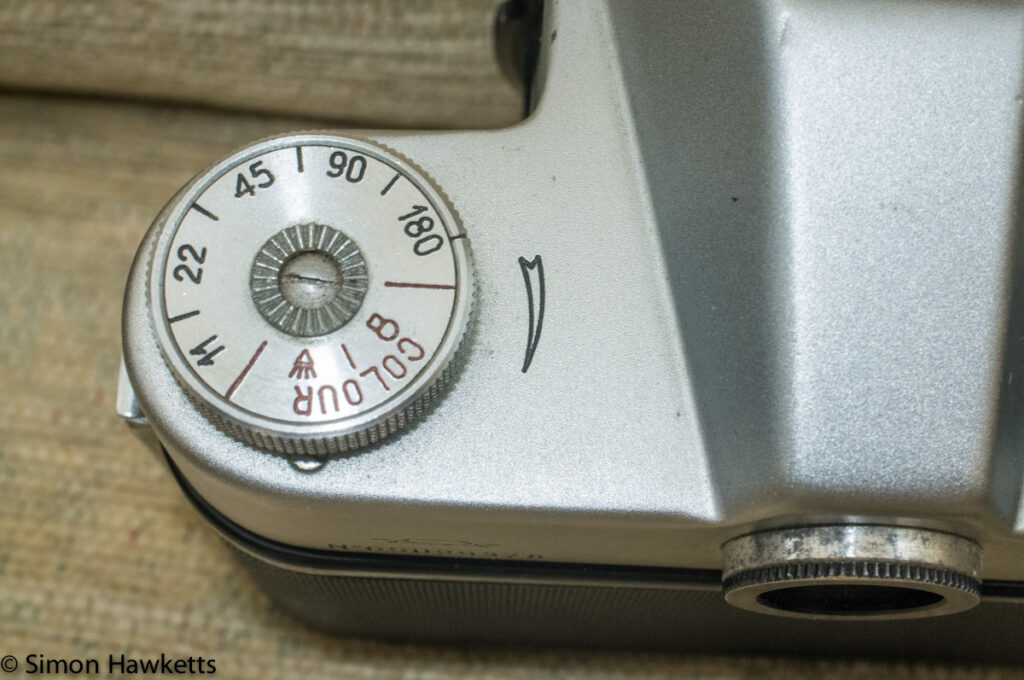
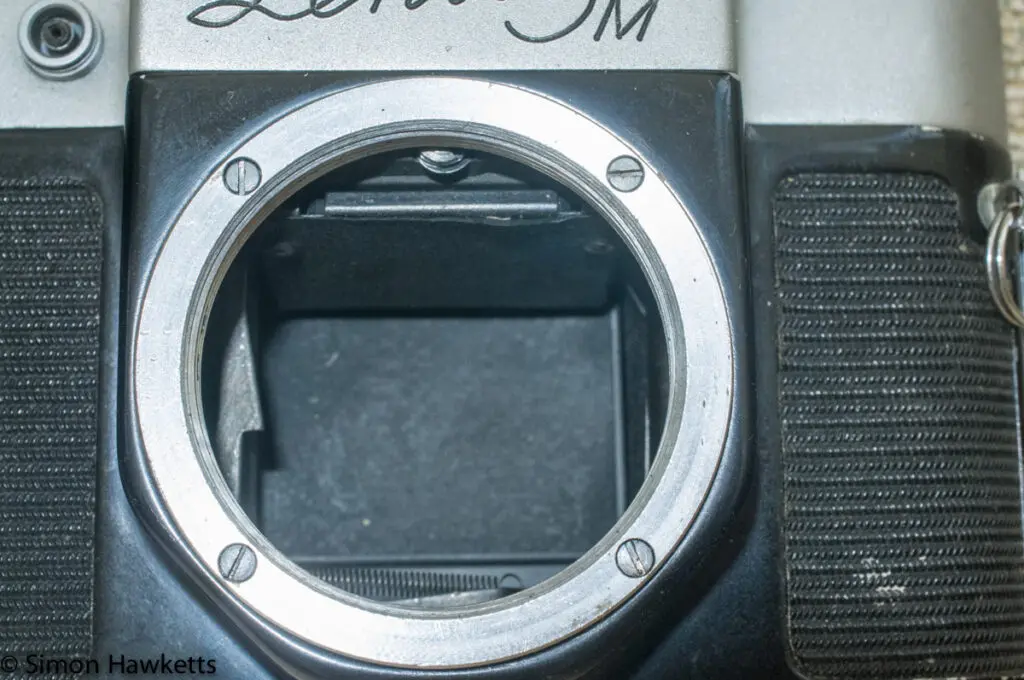
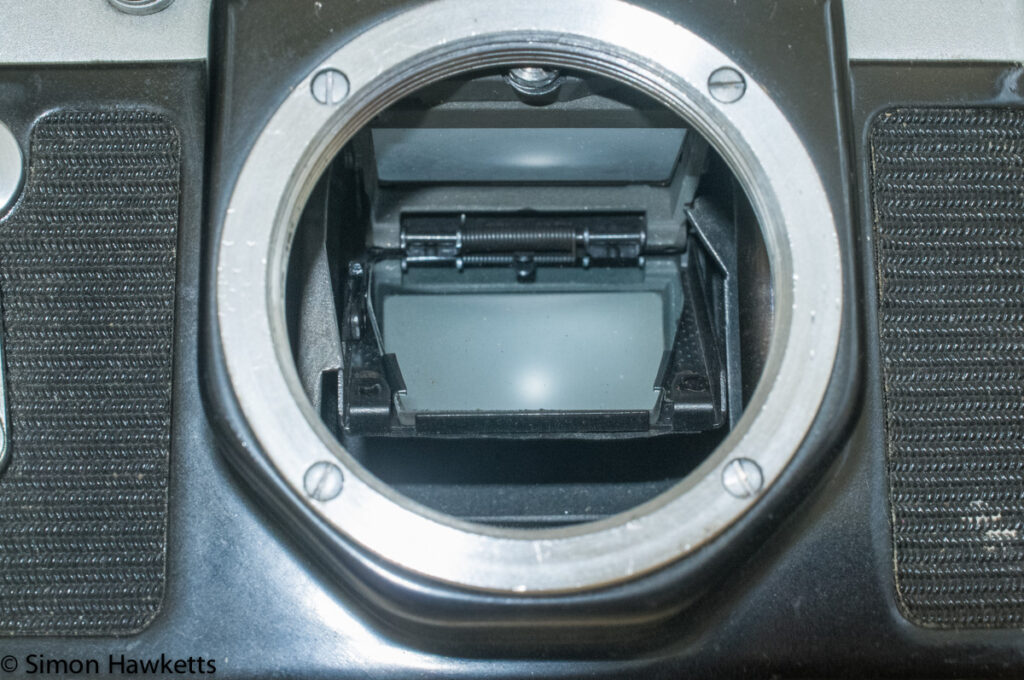
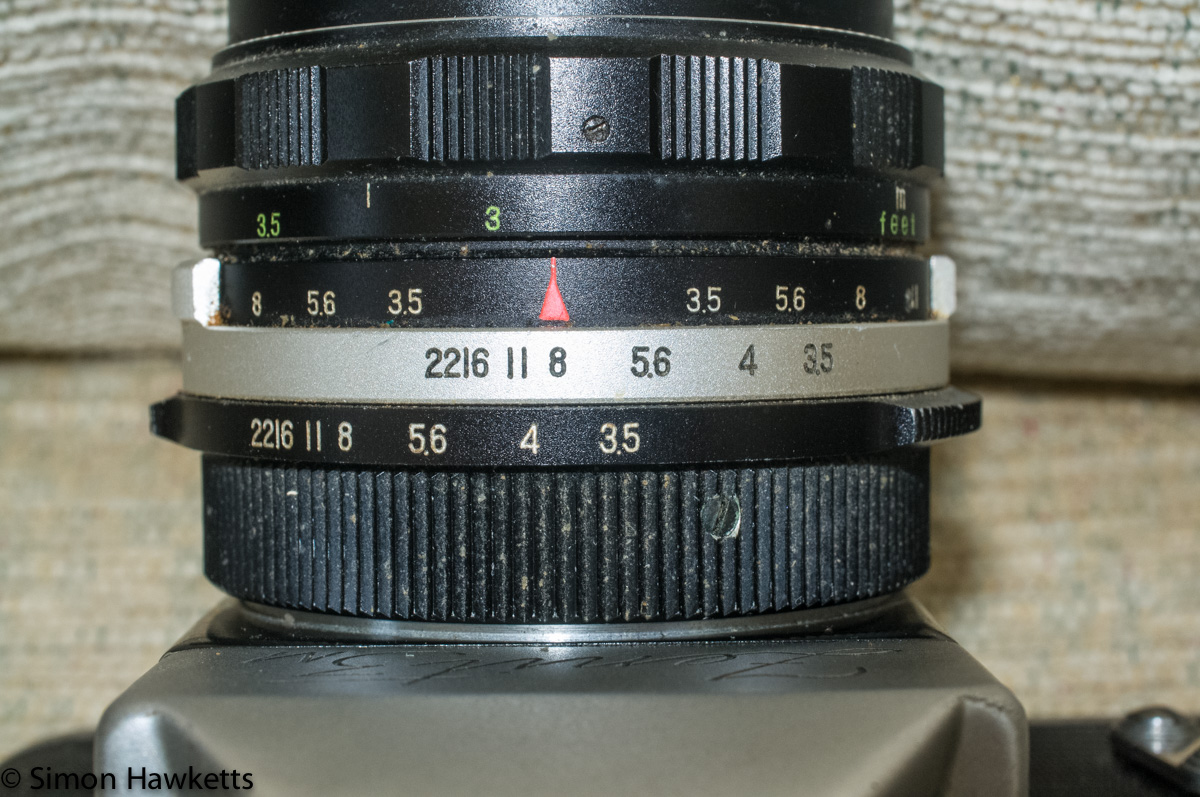
Description of the Zenit 3M camera
The camera is really a very simple design with very little sophistication, but covers all the functionality most photographers needed at a very affordable price.
I remember when I was about 10 and first interested in getting a proper camera, I would look in the window of the Dixon’s store in either Norwich or Kings Lynn and look at all the cameras in the window. The cheapest models were the Prinzflex and the Zenith1. Next came the Praktica models and the Miranda cameras, and at the top of the price range were the Chinon. (I didn’t realize at the time that the Prinzflex models were actually Zenith models with a different name.)
In the end, after many years of looking through shop windows, my first proper SLR camera was a Zenith B which was given to me by my Dad when he upgraded to a new camera.
For many people who couldn’t afford to spend a lot of money on a camera, the Zenith range with their limited shutter speeds and screw thread lens, were actually quite an attraction. For these people, who didn’t take pictures indoors or in poor light, having shutter speeds below 1/30 sec didn’t matter. And there wasn’t much chance of buying lots of lenses, so how long it took to change a lens was pretty much immaterial.
What was important was the fact that you could see the actual picture that was going to appear on the film when you looked through the viewfinder – no more pictures with people missing the tops of their heads or the main subject being out of focus.
So – what did people get for their money when they bought a Zenit 3M?
Well, as I said above the camera is pretty basic with all the essentials for taking photos, but not many extras. The viewfinder for example is a straight forward, ground glass view screen which is OK for focusing but lacks the split-level aid found on many SLR cameras. There is no match needle exposure control, or even central micro-prism aid – it is plain, vanilla, ground glass. It’s also not very bright, although it is large – especially when viewed with modern eyes used to looking at APS-C digital camera viewfinders.
I’ve already mentioned the shutter and the lack of slow speeds but just to fill in the details it is a cloth focal plane shutter that travels horizontally across the film plane. It’s cocked by the action of the film advance, and that action also drops the mirror to allow the image to be viewed in the viewfinder. Once the picture has been taken the mirror doesn’t return to the viewing position, that only happens when the film is next advanced.
Although the lack of an instant return mirror could be seen as a disadvantage, at least the photographer knows the camera is ready to fire when they can see the image in the viewfinder. I remember in the past when I used film cameras regularly (when everyone used film cameras regularly), that I have often missed a photo because I thought the camera was cocked and ready to go when it wasn’t – at least with this system that doesn’t happen.
The lens is a bit unique to the Zenit 3M because it’s an M39 screw thread. That is the same physically as the Leica threaded lens, but the registration distance (the distance from the back of the lens to the film plane) is longer than the Leica, so although the lenses will fit, aren’t interchangeable because a lens made for the Leica won’t focus on a Zenit 3M and visa-versa.
Lenses obviously were made for the Zenit M3 by third party manufacturers however, because the Soligor lens fitted to my example is not the original (the original would have been an Industar or Helios 44), but they weren’t as common as the Pentax M42 thread lenses, and that became the standard which later Zenit cameras adopted.
The Soligor lens is a pre-set lens, and I would say the original lens would also have been pre-set because there is no mechanism on the 3M to automatically stop down the lens when the picture is taken.
For those not familiar with the Pre-set lens, it basically means the lens has two aperture rings. One is used to stop the lens down and the other is used to set the minimum aperture.
The way this works is like this:
- The photographer takes a light reading with a light meter to work out the shutter speed and aperture to use.
- Once these numbers are known, the shutter speed is set on the camera and the second ring on the lens is set to the correct aperture (the silver ring on the photo here).
- The first ring on the lens is set to the widest aperture the lens has (the black ring).
Once set up like this the photographer can cock the shutter and look through the viewfinder to compose the picture with the lens set to its widest and brightest aperture. Then, to take the picture the lens ring is just moved to the pre-set aperture and the shutter release pressed. The photographer doesn’t need to take their eye from the viewfinder to make sure the aperture is correct.
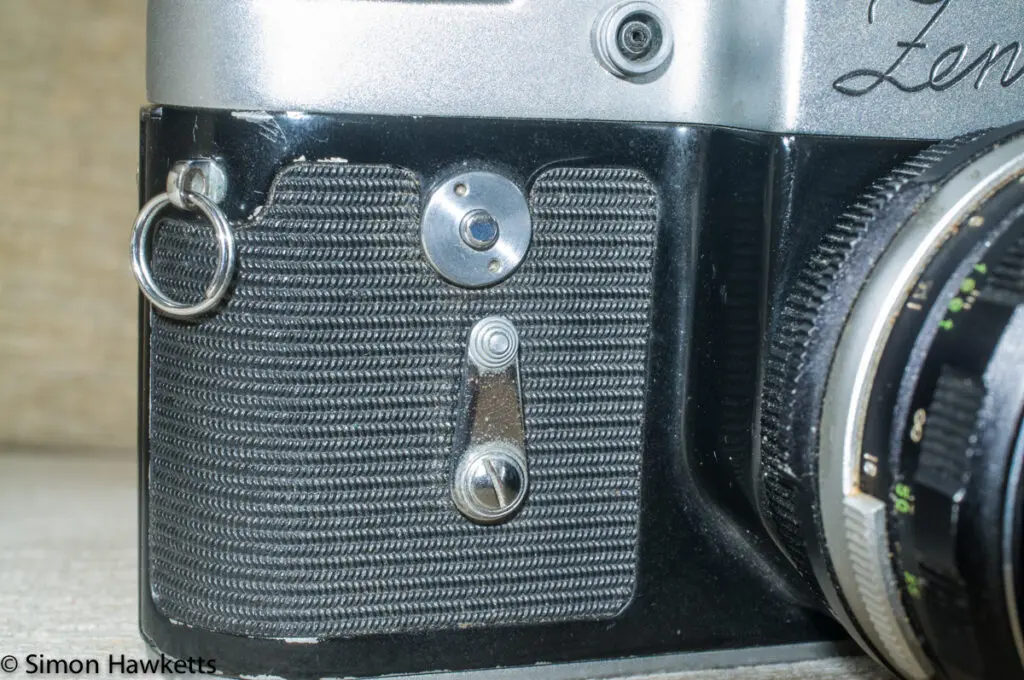
Returning to the camera buyer we first met in the opening paragraphs, who was happy to buy the unsophisticated camera that just offered the basics, you might be surprised to learn that although they were not worried about slower speeds and bayonet mount lenses, a self-timer was quite an important part of the camera spec, in fact it was pretty much a ‘must have’.
It was quite important to be able to set the camera up and move in front of it to get yourself in the picture, along with the rest of the family, so the Zenit 3M was fitted with a self-timer on the front of the camera. The timer had its own button, mounted just above the timer, which was used to trigger it.
So to include yourself in the picture you would:
- Cock the shutter so the film is advanced
- Set the aperture and shutter to the correct setting
- Set the focus (or make sure the aperture is set quite high, so most of the scene is in focus)
- Set the self-timer
- Press the self-timer release button
- Get yourself round to the front of the camera and in position within 10 seconds
- Wait for the shutter to fire
The Zenit 3M is also equipped with flash sync at its lowest shutter speed. There isn’t an accessory shoe, so the flash would need to be held with a flash bracket, but the camera has a small switch under the speed setting which can be moved between M for flash bulb use, and X for use with an electronic flash.
Other useful additions supplied with the camera were a frame counter on the film advance and a film type reminder on the rewind knob.
Zenit 3M Specifications
- Zenit 3M 35 mm SLR camera
- Cloth focal plane shutter
- Shutter speeds 1/30, 1/60, 1/125, 1/250, 1/500 + bulb
- Soligor 35 mm f/3.5 prime lens
- Pre-Set aperture settings up to f/22
- Automatic frame counter with manual set
- Mechanical self-timer with separate trigger button
- Flash sync at 1/30 sec
- Film Type reminder on rewind knob
- Single throw shutter cocking and film advance
- Non-return mirror
- Tripod bush on base
- A copy of the manual can be seen here
- Serial Number: 65029378
- Lens Serial Number: 9704887
Video review of the Zenit 3M
Here is a short video of the Zenit 3M. This is the first short video review on the site, and I’m intending to add more for the popular cameras on the site. I’ll try to get the volume higher for the next ones I make.
- The Zenit range were sold in the UK with the Zenith name [↩]
Discover more from Everything Vintage
Subscribe to get the latest posts sent to your email.

